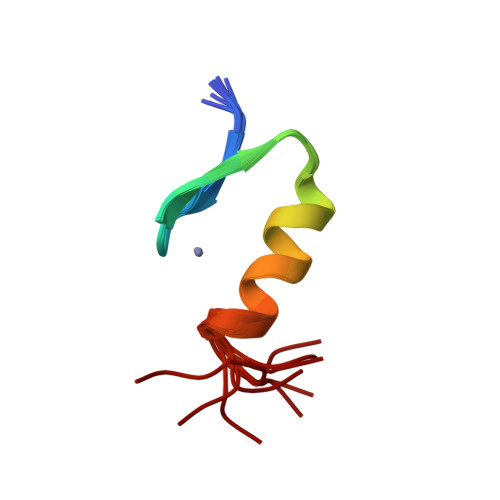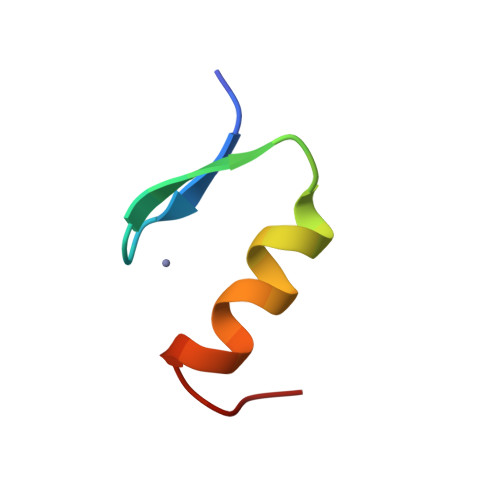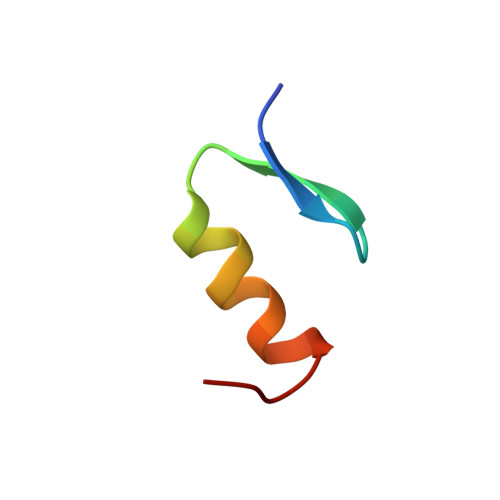Structures of DNA-binding mutant zinc finger domains: implications for DNA binding.
Hoffman, R.C., Horvath, S.J., Klevit, R.E.(1993) Protein Sci 2: 951-965
- PubMed: 8318900
- DOI: https://doi.org/10.1002/pro.5560020609
- Primary Citation of Related Structures:
1ARD, 1ARE, 1ARF - PubMed Abstract:
Studies of Cys2-His2 zinc finger domains have revealed that the structures of individual finger domains in solution determined by NMR spectroscopy are strikingly similar to the structure of fingers bound to DNA determined by X-ray diffraction. Therefore, detailed structural analyses of single finger domains that contain amino acid substitutions known to affect DNA binding in the whole protein can yield information concerning the structural ramifications of such mutations. We have used this approach to study two mutants in the N-terminal finger domain of ADR1, a yeast transcription factor that contains two Cys2-His2 zinc finger sequences spanning residues 102-159. Two point mutants at position 118 in the N-terminal zinc finger (ADR1b: 102-130) that adversely affect the DNA-binding activity of ADR1 have previously been identified: H118A and H118Y. The structures of wild-type ADR1b and the two mutant zinc finger domains were determined using two-dimensional nuclear magnetic resonance spectroscopy and distance geometry and were refined using a complete relaxation matrix method approach (REPENT) to improve agreement between the models and the nuclear Overhauser effect spectroscopy data from which they were generated. The molecular architecture of the refined wild-type ADR1b domain is presented in detail. Comparisons of wild-type ADR1b and the two mutants revealed that neither mutation causes a significant structural perturbation. The structures indicate that the DNA binding properties of the His 118 mutants are dependent on the identity of the side chain at position 118, which has been postulated to make a direct DNA contact in the wild-type ADR1 protein. The results suggest that the identity of the side chain at the middle DNA contact position in Cys2-His2 zinc fingers may be changed with impunity regarding the domain structure and can affect the affinity of the protein-DNA interaction.
Organizational Affiliation:
Department of Biochemistry, University of Washington, Seattle 98195.

















